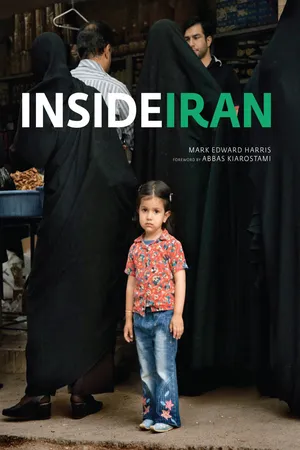
- 208 pages
- English
- ePUB (mobile friendly)
- Available on iOS & Android
eBook - ePub
Inside Iran
About this book
The Islamic Republic of Iran is at the center of world attention politically, socially, and culturallybut it remains largely a cipher to the West. Award-winning photographer Mark Edward Harris has traveled throughout Iran to produce the first contemporary photographic book on a place seldom seen or understood. His images of daily life offer a fascinating look at a society of juxtapositionsancient and modern, commercial and spiritual, serene and intense, political and personal. With chapter introductions and extended captions providing context for the images,
Inside Iran is a crucial look at a country whose future is likely to influence our own.
Frequently asked questions
Yes, you can cancel anytime from the Subscription tab in your account settings on the Perlego website. Your subscription will stay active until the end of your current billing period. Learn how to cancel your subscription.
At the moment all of our mobile-responsive ePub books are available to download via the app. Most of our PDFs are also available to download and we're working on making the final remaining ones downloadable now. Learn more here.
Perlego offers two plans: Essential and Complete
- Essential is ideal for learners and professionals who enjoy exploring a wide range of subjects. Access the Essential Library with 800,000+ trusted titles and best-sellers across business, personal growth, and the humanities. Includes unlimited reading time and Standard Read Aloud voice.
- Complete: Perfect for advanced learners and researchers needing full, unrestricted access. Unlock 1.4M+ books across hundreds of subjects, including academic and specialized titles. The Complete Plan also includes advanced features like Premium Read Aloud and Research Assistant.
We are an online textbook subscription service, where you can get access to an entire online library for less than the price of a single book per month. With over 1 million books across 1000+ topics, we’ve got you covered! Learn more here.
Look out for the read-aloud symbol on your next book to see if you can listen to it. The read-aloud tool reads text aloud for you, highlighting the text as it is being read. You can pause it, speed it up and slow it down. Learn more here.
Yes! You can use the Perlego app on both iOS or Android devices to read anytime, anywhere — even offline. Perfect for commutes or when you’re on the go.
Please note we cannot support devices running on iOS 13 and Android 7 or earlier. Learn more about using the app.
Please note we cannot support devices running on iOS 13 and Android 7 or earlier. Learn more about using the app.
Yes, you can access Inside Iran by Mark Edward Harris,A. C. Harvey in PDF and/or ePUB format, as well as other popular books in Art & Photography. We have over one million books available in our catalogue for you to explore.
Information
CHAPTER 1
TEHRAN
MORE THAN 14 MILLION PEOPLE LIVE IN IRAN’S SPRAWLING CAPITAL CITY, 4,000 FEET ABOVE SEA LEVEL IN THE SOUTHERN FOOTHILLS OF THE ALBORZ MOUNTAIN RANGE.
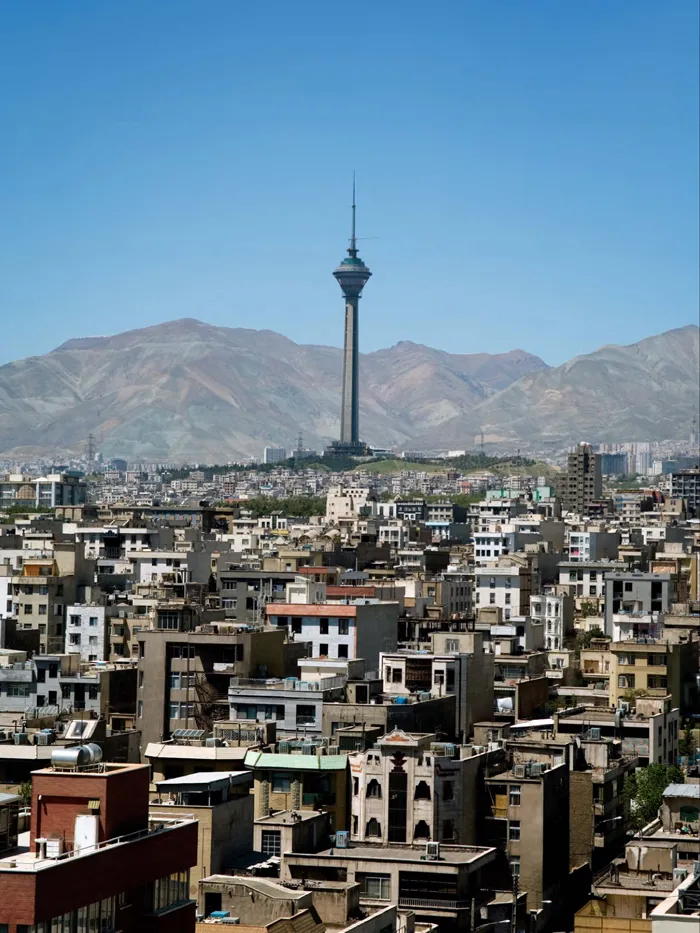
A view of Tehran including the Milad Tower, part of Tehran’s international trade and convention center, from the top floor of the Laleh (tulip) International Hotel.
Tehran, like the rest of Iran, is not how we see it typically depicted in Western media. Since the takeover of the U.S. Embassy in 1979 and the ensuing hostage crisis, we have been exposed to pictures of anti-American murals, women trolling the streets covered in black chadors, and the occasional street execution. This is a small part of a much bigger picture. What we do not see are the throngs of young people hanging out in teahouses, pizza parlors, and shopping malls, or commuting to and from school and work, or mothers and fathers interacting with their children—in other words, scenes of daily life.
In Tehran and some other more cosmopolitan cities such as Isfahan and Shiraz, some of the tensions between religious conservative and Western influences are evident. Battles are often fought in subtle ways and most often by women: head scarves are pulled back to reveal a little dyed hair, or manteaus (long coats less restrictive than chadors, but still meant to obscure a woman’s curves) are worn a little tighter than the norm. Shoes, purses, eyeliner, eyelashes, and lipstick are used to show off an individual’s sense of style. Sometimes, under the chadors and manteaus are designer clothes.
Since so few parts of a woman’s anatomy are visible, those parts that are may be accentuated, sometimes with cosmetics, sometimes with cosmetic surgery. (Tehran is said to be the nose job capital of the world. I saw, but did not photograph, several women with telltale dark circles under their eyes and bandaged noses.)
During my second trip to Iran, a “summer blitz” by authorities took place to enforce the women’s dress code. Two college women I talked with had been stopped recently at two different malls because their manteaus were deemed too short and their hair too exposed. In both cases, female police officers covered in black chadors told them to cover their hair and wear longer manteaus. Under such conditions, it seems strange that shops in these same malls display slinky cocktail dresses in their windows.
The better-off men and women I met often recalled the prerevolution days with fondness. That said, there was not—to my outsider’s eye, at least—a pervasive sense of depressive restriction. On the contrary, there seemed a lively interaction and energy, with smiles and salaams in greeting among passers-by and vivid conversations in teahouses and on the street.
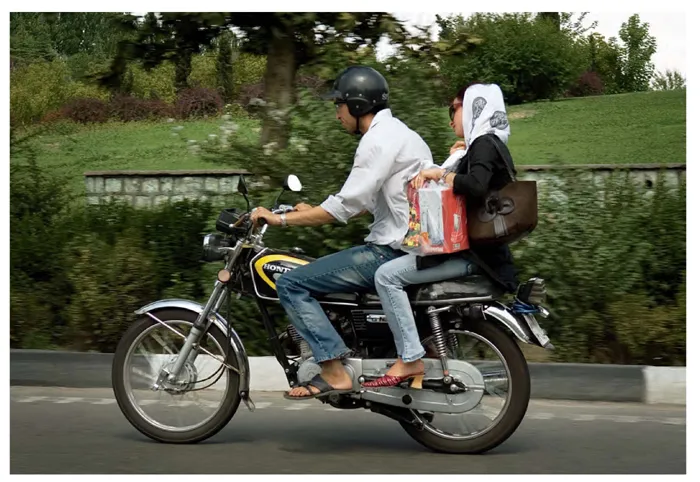
A couple on a motorcycle in northern Tehran.
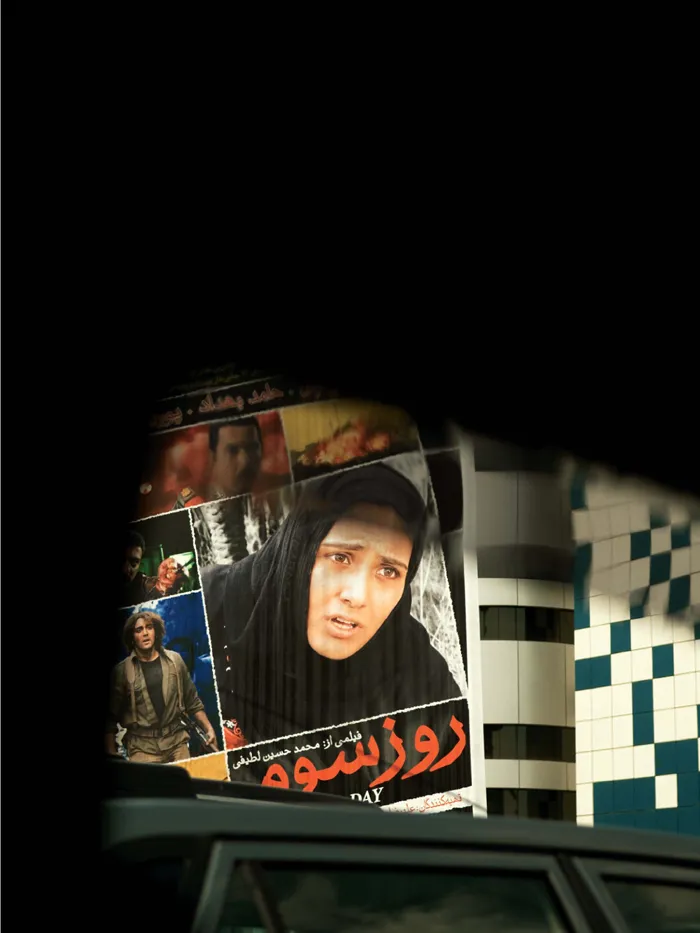
A movie poster viewed from the back of a Tehran taxi.

The 148-foot-tall Azadi (Freedom) Tower is located on the western approach to Tehran from Mehrabad Airport. Built as part of the shah’s lavish 1971 celebrations of the 2,500th anniversary of the founding of the Persian Empire, it incorporates fourteenth-century architectural and twelfthcentury decorative influences. The celebrations were intended to foster nationalist pride, but the $120 million festivities (including a silken tent city for foreign dignitaries built amid the ruins of Persepolis) contributed to a sense of the shah’s conspicuous consumption.

Photographs of the shah’s “friends” at the Sadabad Palace in northern Tehran.
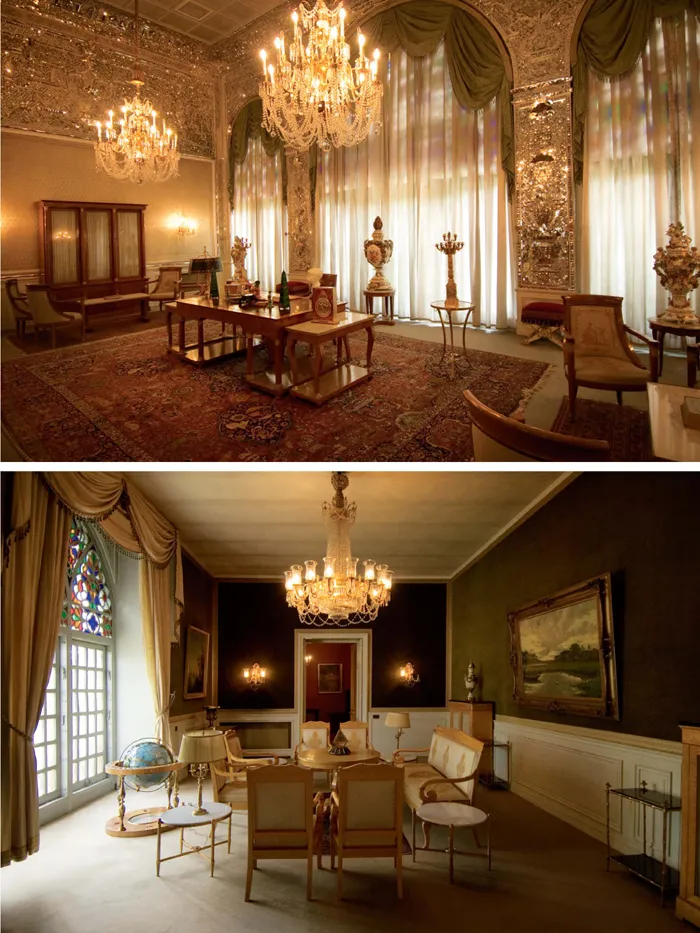
Rooms at the shah’s Sadabad Palace, which now houses a museum complex.

Anti-American murals on the wall of the former U.S. Embassy in Tehran. On February 14, 1979, during the Islamic revolution following the ouster of the widely unpopular shah (king) Mohammed Reza Pahlavi and the return of supreme religious leader Ayatollah Khomeini from exile, young revolutionaries stormed the U.S. Embassy and seized one hundred hostages, who were released shortly afterward. In November, while the shah was being treated in a New York hospital for a gallbladder condition and cancer (after having fled to Egypt, then Morocco, then the Bahamas), militant students seized the embassy and took seventy-two hostages. This time there would be no quick release. Yasser Arafat, head of the Palestine Liberation Organization, negotiated the release of thirteen hostages. Six American diplomats escaped, and one hostage was released due to a medical condition. In April 1980, U.S. President Jimmy Carter ordered an aborted rescue attempt. The fifty-two remaining hostages were released the day that Carter’s successor, Ronald Reagan, was inaugurated—January 21, 1981, 444 days after the hostages were first held captive. The shah, a political hot potato, left the United States for Panama in January 1980, accepted Egy...
Table of contents
- Cover
- Title
- Acknowledgements
- Contents
- About Photography
- Introduction
- Chapter 1 Tehran
- Chapter 2 Heart of Iran
- Chapter 3 Isfahan: Half the World
- Chapter 4 Mashhad and Eastern Iran
- Chapter 5 Western Iran
- Chapter 6 The Caspian Sea
- Chapter 7 Kish Island and the Persian Culf
- Chapter 8 The Shatt Al-Arab Waterway
- About the Author
- Copyright